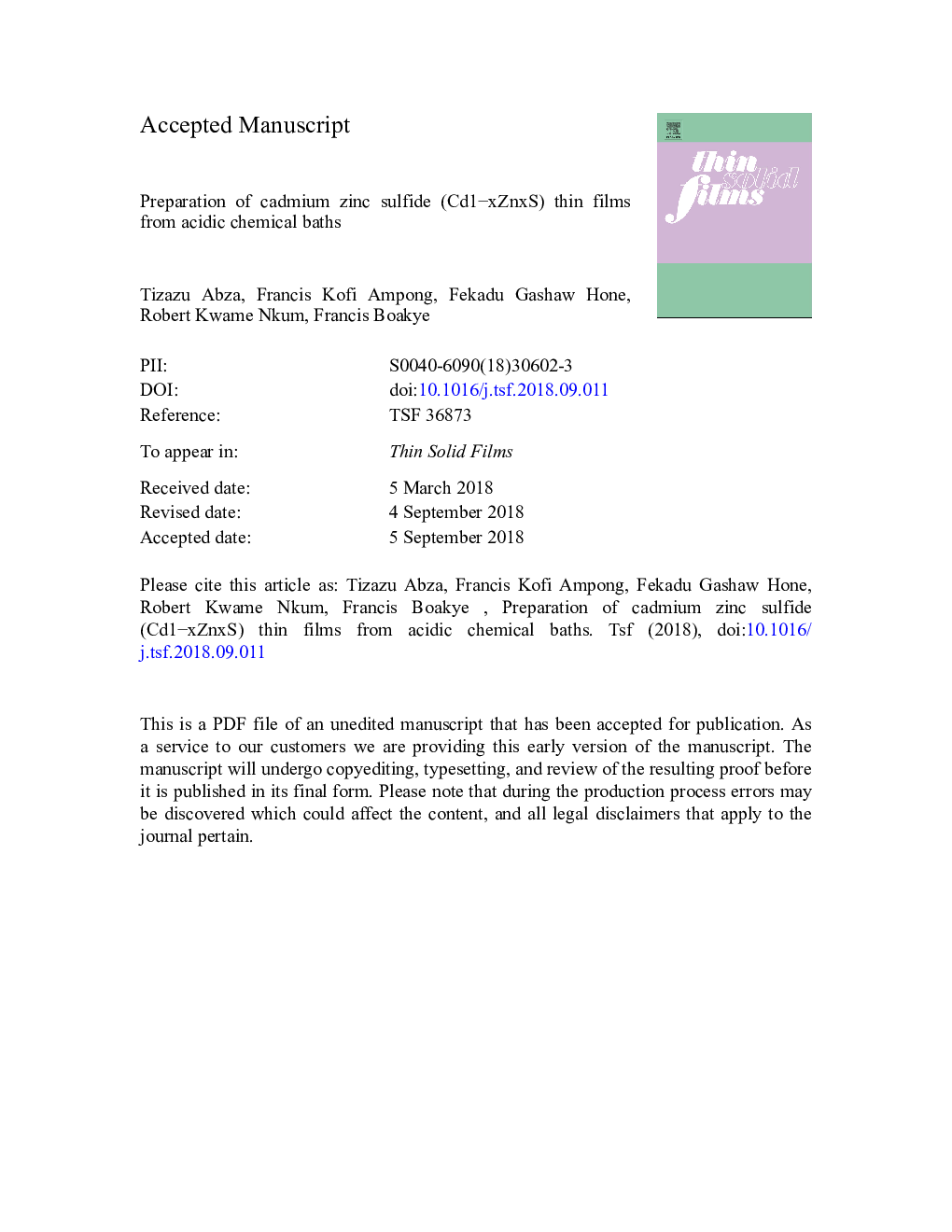| Article ID | Journal | Published Year | Pages | File Type |
|---|---|---|---|---|
| 10156114 | Thin Solid Films | 2018 | 23 Pages |
Abstract
Ternary cadmium zinc sulfide (Cd1âxZnxS) thin films were deposited by chemical bath deposition method for the entire range of 0â¯â¤â¯xâ¯â¤â¯1 from acidic chemical bath using tartaric acid and hydrazine as a complexing agents. The X-ray diffraction (XRD) studies revealed that the deposited thin films had hexagonal crystal structure in the range of 0â¯â¤â¯xâ¯â¤â¯0.6 and pure cubic phase at xâ¯=â¯1, whereas, the thin films deposited in the range of 0.72â¯â¤â¯xâ¯â¤â¯0.9 had a mixed cubic and hexagonal structures. Furthermore, the XRD results showed that the crystalline size and lattice constants were decreased linearly with the gradual incorporations of zinc ion in the Cd1âxZnxS thin films. The optical spectroscopy investigation established that the band gap of the deposited ternary thin films found in the range of 3.84â¯eV to 3.94â¯eV. The scanning electron microscope studies illustrated that the surface morphologies of the prepared thin films were formed from spherical grains. The presence of cadmium, sulfur and Zinc elements in the synthesized thin films were confirmed by the energy dispersive x-ray analyses. The unusual large band gap obtained for pure cadmium sulfide and ternary Cd1âxZnxS thin films deposited under the present deposition condition together with the preferred orientation along the (002) plane make these thin films useful as a buffer layer in thin film solar cells.
Related Topics
Physical Sciences and Engineering
Materials Science
Nanotechnology
Authors
Tizazu Abza, Francis Kofi Ampong, Fekadu Gashaw Hone, Robert Kwame Nkum, Francis Boakye,
